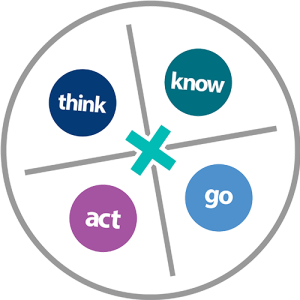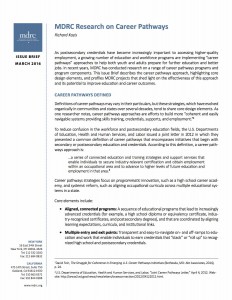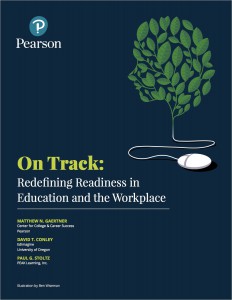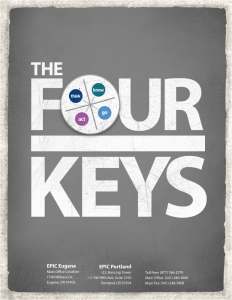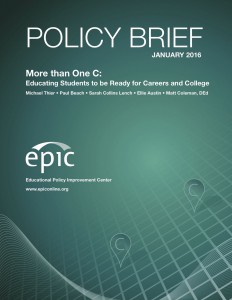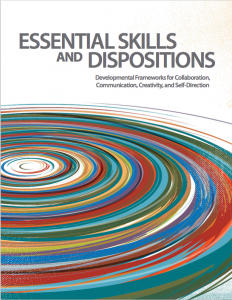Research & Resources

MDRC Research on Career Pathways
From the March 2016 issue brief by Richard Kazis: “As postsecondary credentials have become increasingly important to accessing higher-quality employment, a growing number of education and workforce programs are implementing “career pathways” approaches to help both youth and adults prepare…
On Track: Redefining Readiness in Education and the Workplace
In this paper, we [Matthew Gaertner, David Conley, and Paul Stoltz] attempt to clarify the readiness landscape. We introduce three readiness paradigms—the college readiness index for middle school students, the Conley Readiness Index, and GRIT—and review their goals, theoretical foundations,…
Student-Friendly Poster: The Four Keys to College and Career Readiness
Much of our work is based on the Four Keys to College and Career Readiness model, developed by our founder, Dr. David Conley, and EPIC staff. It incorporates over a decade of research on what it takes to succeed in…
Four Keys Reference Guide
Many educators, families, and students are taking a hard look at the current educational system in the United States and finding there is a significant gap between what is and what ought to be if we want our country to…
South Carolina College and Career Readiness Toolkit
The South Carolina College and Career Readiness Toolkit was designed to foster conversation among leaders from school districts and higher education about what it means to be college and career ready, and to help develop action plans for new and…
More Than One C: Educating Students to Be Ready for Careers and College
This policy brief from EPIC discusses the United State's bias toward college-going as the gold standard and how to counteract that singular mode of thinking. EPIC outlines why definitions of K–12 success should balance an emphasis on each C (college…
This Is What a Student-Designed School Looks Like (KQED)
Luba Vangelova of KQED News writes about The Independent Project at Monument Mountain Regional High School in Great Barrington, MA: The 2010 pilot involved eight students — sophomores, juniors and seniors — chosen on the basis of written applications and…
Should High School Students Have to ‘Defend’ Their Diploma Like a PhD? (Hechinger Report)
Brenda Iasevoli of The Hechinger Report profiles Los Angeles High School of the Arts, which is in its second year of having its seniors defend their portfolios. She places the profile against the larger backdrop of alternate measures of student—and…
Personalized PBL: Student-Designed Learning (Edutopia)
Andrew Miller of Edutopia writes about the importance of engagement on student leaning and “moving past ‘course-based’ PBL”: "Due to the antiquated restraints of the education system, most educators are forced to implement PBL in a “course-based” manner. This means…
Essential Skills and Dispositions: Developmental Frameworks for Collaboration, Communication, Creativity, and Self-Direction
This set of developmental frameworks was created to facilitate discussion within communities of practice and to enhance a shared understanding of the dynamic nature of four essential skills—collaboration, communication, creativity, and self-direction in learning. The frameworks define components inherent to…
![[Graphic] Our best work begins in conversation with people who care about students. We should talk.](https://dev.inflexion.org/wp-content/uploads/2018/02/Contact-Us-graphics.png)
Partner with Inflexion
At Inflexion, we know that although educational systems have similarities, they also have unique challenges. Fill out the form below, and we will get you in contact with the experts who can best assist you.
